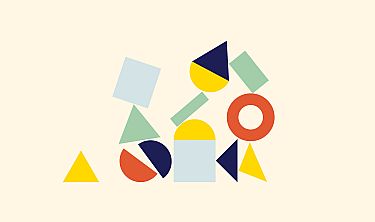Design thinking is everywhere, and it’s gone beyond aesthetics and user experience. It turns out that identifying problems, iterating versions, and true viability testing can be applied to your career. Maybe you’re just starting out, wondering how to make a five- or ten-year plan when you aren’t even sure if you should go to grad school or if you majored in the right thing. Or maybe you’ve been in a corporate career for fifteen years and want something else but don’t know if it’s worth it to make the leap into something new. As the gig economy and independent work continue to grow, strategically engineering your career will not only become interesting, but imperative. Get a head start and jump in now.
Know the Difference Between a Problem and a Circumstance
“Before you can do problem solving, you have to do problem finding.” Dave Evans, author of "Designing Your Life", and Stanford professor explains. So many of us get hung up on things we can’t change, and often take too much responsibility for things out of our control. We can solve for a problem, but have to work with and around the circumstances we find ourselves in – whether that’s the economic climate, our current employer, or our personal finances. Don’t waste time trying to ‘fix’ something that’s already fixed in place.
It sounds so simple, but when you can take a sober assessment of what you’re facing, and which is a problem and which is a circumstance, you can begin to see the paths ahead of you. “Design is biased to action. When in doubt, do something.” Evans’ mandate is clear: don’t get hung up on a problem you can’t change. Once you accept that some of your problems are actually just factual circumstances, you’re freed up and can find where the movement is.
Iterate Multiple Versions of Success
The problem with five-year plans is that we only make one. There are always multiple versions of success, and dreaming wide can actually help you get focused. We can get stuck on one singular idea of success, or get overwhelmed by the seemingly endless options ahead of us. How to pick when you could do anything? How can you move forward when there’s only one thing you want?
Consider this: Evans conducted a seminar where he asked participants to write an explanation and story of the next five years of their life. Then write a completely different one. Then a completely different one. “There are lots of you in there! There are other things you can do!” They found that by having participants forecast wildly different versions of their lives, individuals became excited about all the different possibilities they could live into. Surprisingly, they also had an easier time deciding which one they wanted. After they saw what the choices were, they were happier with the choice they ended up making.
Fail Faster
Everyone is extolling the virtues of failure, but it can still be counter-intuitive to celebrate a flop. The faster you get to a dead-end, the faster you can reroute and get back on the road to where you want to go. These failures are crucial to getting closer to success, but we forget to relish them because they can be painful, expensive, or disheartening. Just when you thought you were on the right track, just when you had invested that time or money, then it all goes belly up.
With design thinking, one of the best things that can happen is failing, and failing faster and faster. You get out before you get too far in – and get closer each time.
You’re not only learning what works and doesn’t work, but you’re learning how to learn, which is an infinitely more valuable skill for your career in the long term. Evans spells this out clearly: “No one knows exactly where they’re going – we’re all just making it up as we go along. So why not get really good at making it up as we go along?” This curiosity and testing should, and inevitably will, continue even as you find your ‘dream job.’ So don’t be afraid to fail – don’t be afraid to learn. Think of them as experiments and learn from them. Keep doing this indefinitely.
There is no perfect you, but there is probably a better you that is achievable. “Designers aren’t necessarily more creative than everybody else, but they are better at getting unstuck,” says Dave Evans.
Quotes from this piece are taken from the Hidden Brain podcast, “You 2.0, Getting Unstuck.”





